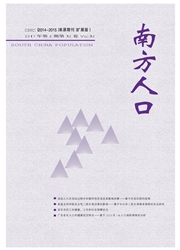

 中文摘要:
中文摘要:
利用2012年上海少数民族常住人口分布数据,采用数理统计和ESDA技术对上海少数民族常住人口数量、分布状况进行研究.研究表明:上海少数民族常住人口数量不断增加且集中分布于中心城边缘区和近郊区;少数民族常住人口在空间格局上存在显著的“同质集聚、异质隔离”;显著的“冷点”区域主要集中在崇明县、金山区等远郊区,显著的“热点”区域主要集中在五角场区域和九亭镇,较为热点的区域主要集中于花木镇、七宝街道、江川路街道、车墩镇和新桥镇等区域,而青浦区、浦东新区大部分区域则是较为冷点区域,中心城区大部分区域形成了随机分布的区域;不同族别的少数民族分布状况有着较大差异,亲缘、地缘和族缘为纽带的乡土观念仍然是少数民族常住人口集聚的重要因素.
 英文摘要:
英文摘要:
Based on the 2012 data of distribution of ethnic minorities in Shanghai, the authors adopt mathematical statistics and ESDA technology to analyze the changes of the minority residents' distribution in Shanghai. The results shows that the minority population increased continuously and concentrated in the faubourg of Shanghai, and Minority population' s spatial distribution pattern is homogeneous agglomeration and heterogeneous isolation. The minority population tend to be away from the outer suburbs such as Chongming, Jinshan district etc. and are likely to concentrate in Wujiaochang and Jiuting town. Their distribution in the downtown area formed a random distribution. The distribution differs with different minority nationalities and the driving forces for their agglomeration are mainly the provincialism-based relationship such as affinity, geography and clan.
 同期刊论文项目
同期刊论文项目
 同项目期刊论文
同项目期刊论文
 期刊信息
期刊信息
